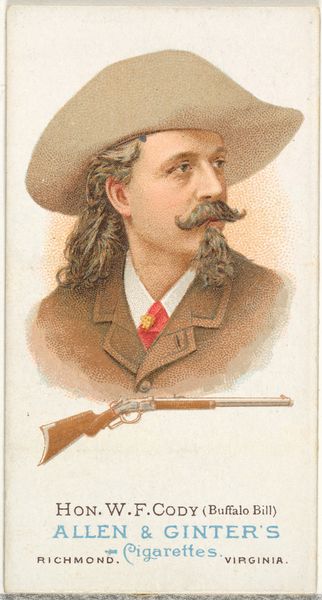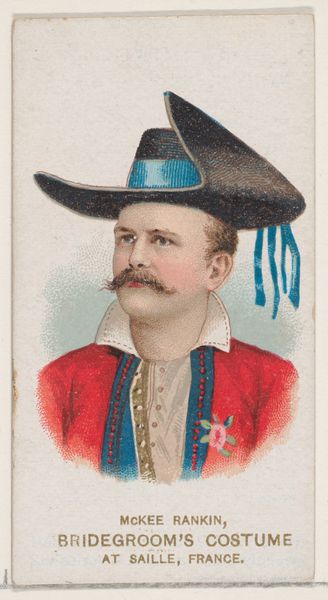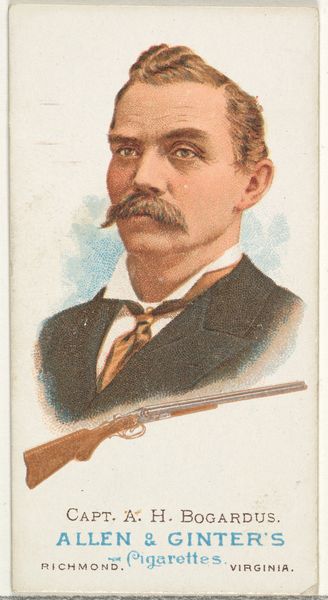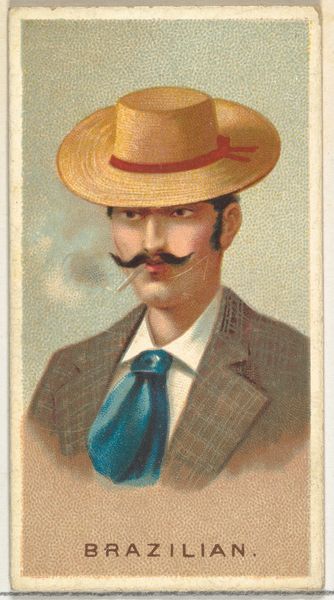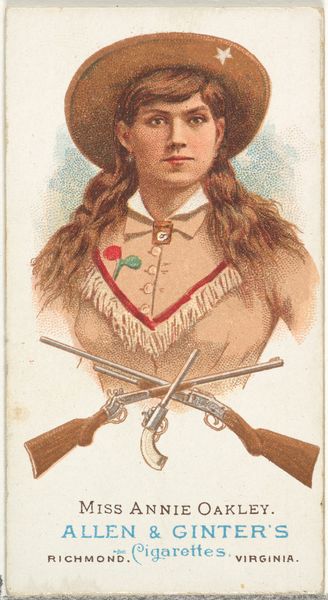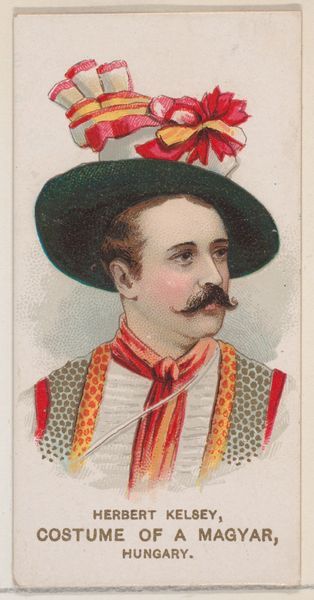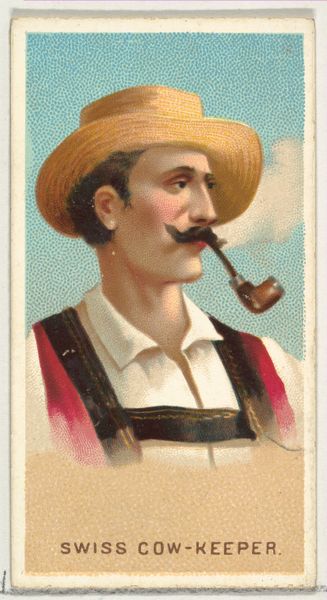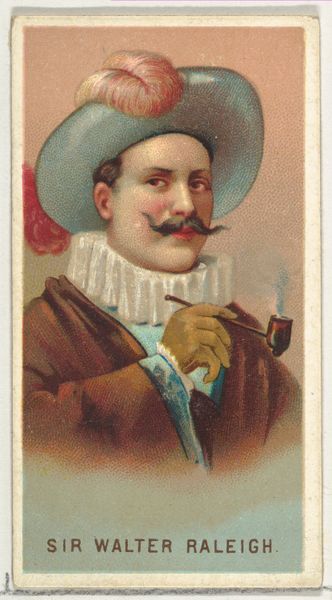
Dr. William Frank Carver, Rifle Shooter, from World's Champions, Series 1 (N28) for Allen & Ginter Cigarettes 1887
0:00
0:00
drawing, print
#
portrait
#
drawing
# print
#
caricature
#
caricature
#
men
#
history-painting
#
academic-art
Dimensions: Sheet: 2 3/4 x 1 1/2 in. (7 x 3.8 cm)
Copyright: Public Domain
Curator: Here we have a lithograph dating back to 1887, titled "Dr. William Frank Carver, Rifle Shooter" by Allen & Ginter. Part of their World's Champions series, it was originally produced as a cigarette card. My immediate reaction? This feels like a relic of a bygone era, romanticizing the "Wild West." Editor: It definitely carries that air of romanticized masculinity. Looking at it now, the overt connection to cigarettes as a promotional tool raises some immediate ethical questions about targeting consumers. But the way the image is constructed, it's clear that Carver is posed not only as an entertainer, but also as a representation of an idealized archetype of the frontiersman. I am intrigued, however, that such a portrait might signify differently depending on the intersectional identities and lived experiences of those who come across it, whether today or 150 years ago. Curator: Exactly. These cards weren't just innocent collectibles; they actively shaped perceptions and propagated certain narratives. Notice how Carver, with his confident gaze and crossed rifles, embodies rugged individualism. However, let's consider the Native American perspective on figures like him – often seen as invaders and symbols of cultural erasure. And what’s so very striking about this card’s history and function, as an advertisement that associates these concepts with smoking? Editor: The use of caricature is interesting here as well. There's a clear intent to elevate Carver to a mythical status. The aesthetic choices contribute to that reading of the artwork: color palette, for instance, makes it nostalgic. But from my point of view, this is more than a harmless depiction of the past, but an active reinforcement of a set of power structures during this particular era, by imbuing the subject and viewer alike with power and masculine energy that’s intimately bound up in commercial interests. Curator: Precisely. And it's crucial we examine that visual language and the social structures they both influenced and reified. By analyzing Allen & Ginter’s promotion, its relationship to both commercialization and public perceptions of heroes of the Wild West, one gets at least a glimpse of both historical memory, gender and class. The work’s aesthetic qualities are only one lens; an additional analysis reveals its more lasting historical resonance. Editor: Absolutely, bringing these threads together – visual culture, popular culture, socio-political context – that’s how we can arrive at a comprehensive understanding. Curator: Well said! And that perspective transforms a seemingly simple cigarette card into a lens that captures significant insights from cultural past.
Comments
No comments
Be the first to comment and join the conversation on the ultimate creative platform.
